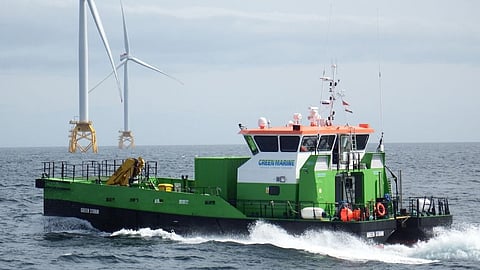Green Marine UK expands environmental monitoring service for offshore wind projects in Scotland
Offshore services provider Green Marine UK is scaling up its environmental monitoring (EM) offering for offshore wind customers to deliver full-scope projects following a surge in contracts with the Scottish Government’s Marine Directorate.
The expansion follows 18 months of continuous work, largely involving the collection of passive acoustic monitoring (PAM) devices. Operations have lasted up to 20 days retrieving approximately 40 devices over distances approaching 250 nautical miles.
PAM incorporates underwater microphones (hydrophones) to effectively monitor and record migratory fish, marine animals, and the environment. These devices offer a vital tool for offshore wind developers and government stakeholders to protect marine ecosystems and comply with environmental regulations.
Traditionally, Green Marine has supplied vessel charter services for EM projects but has fast developed further expertise. This has resulted in more detailed workscopes including deployment and collection of EM devices to data processing. It has seen further involvement in "catch and tag" projects to monitor fish movement.
After securing a large share of contracts through Scotland’s Marine Directorate, Green Marine is now being approached by windfarm operators directly, with new contracts commencing later this month.
The Joint Nature Conservation Committee (JNCC) has guidelines for using PAM to reduce the risk of injury to marine mammals from offshore activities. These guidelines are adopted as part of the consenting regime within the United Kingdom Continental Shelf.
The process of retrieving PAM devices usually involves activation of a release mechanism allowing the buoys to float to the surface. Crew can then hook the top float and bring the device on deck. However, when acoustic releases fail, grapnel equipment is lowered onto the seabed before manoeuvring the vessel to a predetermined area where the mooring can be "snagged and grabbed." In more sensitive marine areas, mooring location and retrieval is aided by a remotely operated vehicle.


